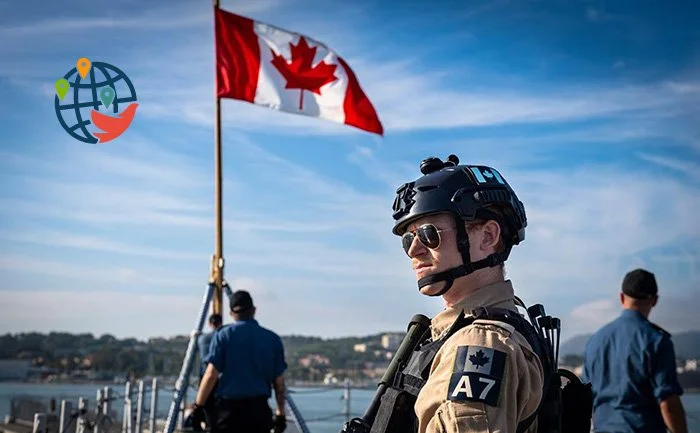The Army in Canada: How to join the Canadian Armed Forces

If you dream of serving in the Canadian army, find out how to do so and what service options are available.
Photo: Canadian Armed Forces | Facebook
Unlike post-Soviet countries, Canada does not have compulsory military service. Military duty (conscription) was temporarily introduced in Canada in World War I and World War II to deal with the huge labour shortage. In both cases, however, the measures were limited, specific and short-lived, and ended immediately after the labour crisis ended.
In this article, let's look at the topics:
- the structure of Canada's military forces;
- positions available to immigrants;
- wages;
- benefits for military personnel;
- eligibility requirements;
- sending a resume;
- paid training for beginners.
Military obligation became a very contentious issue during both World War I and World War II. This was particularly evident in the province of Quebec, as the federal government created a sharp division between English-speaking Canadians, who tended to support military duty, and French-speaking Canadians, who did not.
The Canadian Armed Forces currently has about 68,000 members of the regular armed forces and 27,000 members of the military reserves. There is a bit of controversy that Canada could use more regular armed forces and reservists. Canada currently has one of the smallest reserve armed forces in the world, and the country's territory is too vast to adequately defend its interests. The primary purpose of the military is to defend Canada and its interests abroad. However, a larger and more powerful military force could serve other purposes.
Canadian Armed Forces
The Canadian Armed Forces (CAF) are responsible for defending Canada's national interests.
The Canadian Armed Forces consist of the Army, the Air Force (RCAF) and the Navy (RCN). Service members belong to either the Regular Armed Forces or the Reserve Armed Forces, which in turn consist of four units: the main reserve, the supplementary reserve, cadet organizations and the Canadian Rangers.
The Canadian armed forces are governed by the Armed Forces Council, which is headed by the Chief of Defence Staff. The commander-in-chief is the reigning Canadian monarch, Queen Elizabeth II, who is represented by the Governor General of Canada.
Service in the Canadian army

This weekend Canada switches to winter time

A new era for Canadian athletes

Canada celebrates its National Day and reflec...

Rising inflation in May threatens rate cuts i...

Canada Prepares for a Sharp Increase in the E...

High Auto Insurance Rates for Immigrants Spar...

Canadian intelligence raises alarm: China's i...

Canada continues to attract skilled professio...

How the food supply chain in Canada works and...

The mysterious disappearance of a taxidermy g...

The remains of a mysterious ship have been fo...

Saskatchewan raises age limit for tobacco pur...
Photo: LS Erica Seymour, 4 Wing Imaging | Canadian Armed Forces | Facebook
If you want to serve in the Canadian Armed Forces, you have several options: serving in the Regular or Reserve Armed Forces, working as an officer or as a non-officer in the military.
Regular armed forces
Members of the Regular Force serve on a full-time basis to protect Canada and defend the country's sovereignty. They also contribute to international order and security and work with the U.S. to protect North America. Members of the Regular Force are prepared to respond to threats, natural disasters or humanitarian crises in Canada and around the world.
Most regular force employees work normal eight-hour days, with evenings, Saturdays and Sundays off. However, there are exceptions where work periods will exceed eight hours.
In addition, all members of the regular forces must be prepared for deployment. This depends on a number of factors, including the type of mission, your profession, the unit in which you serve, and the need for your skills on the ground. Certain specialists are more likely to be selected for deployment than others.
Terms of contracts in the regular Canadian Armed Forces start at three years, but can be longer depending on the type and amount of training you need for your service.
Reserve armed forces
Members of the Reserve Force serve in the Canadian Armed Forces on a part-time basis. Their primary role is to support regular forces at home and abroad. Reservists usually serve one or more evenings a week and/or weekends at locations close to their home. Some reservists may volunteer for operations if positions are available.
Both regular and reserve servicemembers are not required to live on a military base. Most service members prefer to rent or buy their own housing in the city where their duty station is located.
Officers
Officers in the Canadian Armed Forces hold leadership positions. They are responsible for the safety, welfare and morale of a group of soldiers, sailors and airmen. Their job involves analysis, planning, decision-making and providing guidance.
Unauthorized employees
Non-Commissioned Officers are qualified personnel who do not hold military ranks and perform operational and support functions with the Canadian Armed Forces. Non-Commissioned Officers begin their careers as recruits and are trained for specific jobs.
Salaries and benefits
Photo: Canadian Armed Forces | Facebook
Wages
The Canadian Armed Forces offer a competitive salary. Your skills, knowledge, experience and training affect your starting salary. An entry-level member of the armed forces can earn $35,820 to $62,424 CAD per year while completing basic training.
You have seen 52% of the text. This article is available only to users with Premium Access. Want to get access to this and other Premium articles? Subscribe to Premium Access!

















